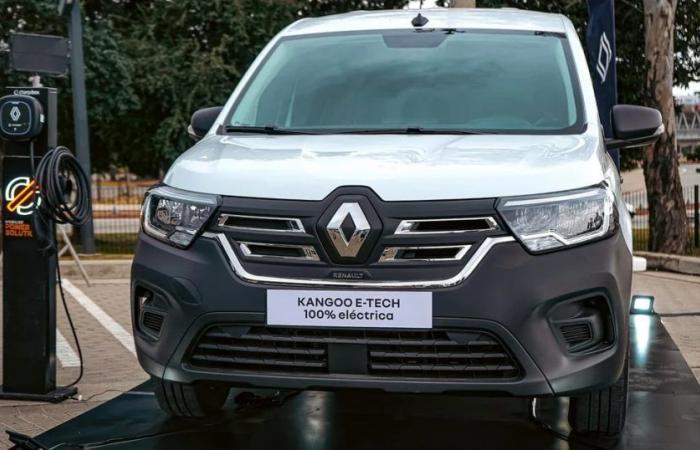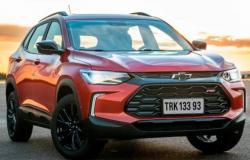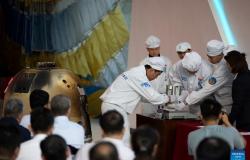Although the official presentation of the new Renault Kangoo E-Tech closes the circle of the three electric models that the brand announced for the Argentine market for the year 2024, the story began much earlier, in 2018.
It was then that the first electric version of the successful van arrived, which turned 25 in Argentina in October last year, called Renault Kangoo ZE (Zero Emissions)marking a milestone in the national automotive industry, which a year later would receive the Nissan Leaf as the first 100% electric passenger car.
The path undertaken by Renault towards sustainable mobility has several aspects to highlight. Those first models that carried the ZE designation They appeared in Europe in concept format in 2009but as production cars from 2011. They were the Kwizyhe Fluence and the Kangooand since 2017, the Master, the brand’s largest van. The family also grew with the Zoe and the Twingowhich thus had a second electrical life.
But later, with the help of “Renaulution”, which is probably one of the transformation processes of the brand in its entire history, Luca de Meo, Global CEO of Renault Groupannounced the division of the brand into different clearly differentiated companies, thus giving the birth of Amperededicated to all 100% electrical products, and separate from Alpine (sports motorsports), Mobilize (mobility and financing services) and powerthe company that continues the development of low-emission internal combustion and hybrid vehicles under the brands Renault, Dacia and Renault LCV.
Electrification also reached an experimental stage that still continues, that of developing removable batteries, so that the charging process can be accelerated, since conceptually, a discharged battery is left and a full one of electricity is placed to continue on the road in a few minutes. This system is still far from being a reality due to the scale of batteries it involves, but brands like NIO is implementing it in China.
What all these electrification milestones represent for Renault is that the three launches in Argentina that occurred this year, are the consequence of a long-studied and progressive decision by the brand, which differs from that of other automobile manufacturing companies, which jumped into electric mobility overnight.
After the Kwid E-Tech and of Megane E-Techintended for personal or family use, the arrival of the Kangoo E-Tech represents a electric mobility solution for companies or institutions that give value and importance to reducing environmental impact through their vehicle fleet.
Technically, the Kangoo E-Tech is equipped with a 90 kW (120 HP) electric motor and 245 Nm of instant torque. The new one lithium ion battery is 45 kWh40% larger than that of the Kangoo ZE, is made up of eight independent and easily accessible modules, and is equipped with a liquid cooling system and electrical resistance designed to maintain its use in the appropriate temperature zone, which results in maintaining its factory autonomy and reducing charging time.
The balance of the configuration between the electric motor and the battery allows it to reach a autonomy of 300 km WLTP cycle. These values are perfectly compatible with the work of fleets and last mile delivery, for which the vehicle was designed. The battery demands less than six hours go from 15% to 80% charging when connected to a Wallbox 7.4 kW and barely 30 minutes when connected to a public 80 kW (DC) charger.
Kangoo E-Tech can be charged via single-phase AC power 7.4 kW, suitable for charging on a home charger; burden 22 kW three-phase AC, configured for charging at public, semi-public stations and home charging; and 80 kW DC fast charging (direct current) for ultra-fast highway chargers.
When driving, you can do it in Normal or Eco modewhich limits the power and maximum speed of the vehicle, and makes it possible to improve the overall range when used to transport light loads or move without additional load.
In the new 100% electric Kangoo E-Tech, conventional hydraulic braking is assisted by a system ARB (Adaptive Regenerative Brake System)which maximizes the amount of energy recovered regardless of the braking regime selected.
There are three levels of regenerative braking:
Level 1 (indicator light B1): limited regenerative mode, suitable for driving on highways and expressways.
Level 2 (B2): Standard regenerative mode for versatile use that has a combustion engine feel when you step on the accelerator.
Level 3 (B3): maximum regenerative mode for use in traffic jams and mountain sections.
The announced sales price for the month of June of the Renault Kangoo E-Tech is 48,124,000 pesos. The batteries are guaranteed eight years or 160,000 km. If during this period of time and use there is a decrease in its load capacity of less than 70% of its nominal value (SOC), it will be replaced free of charge.






